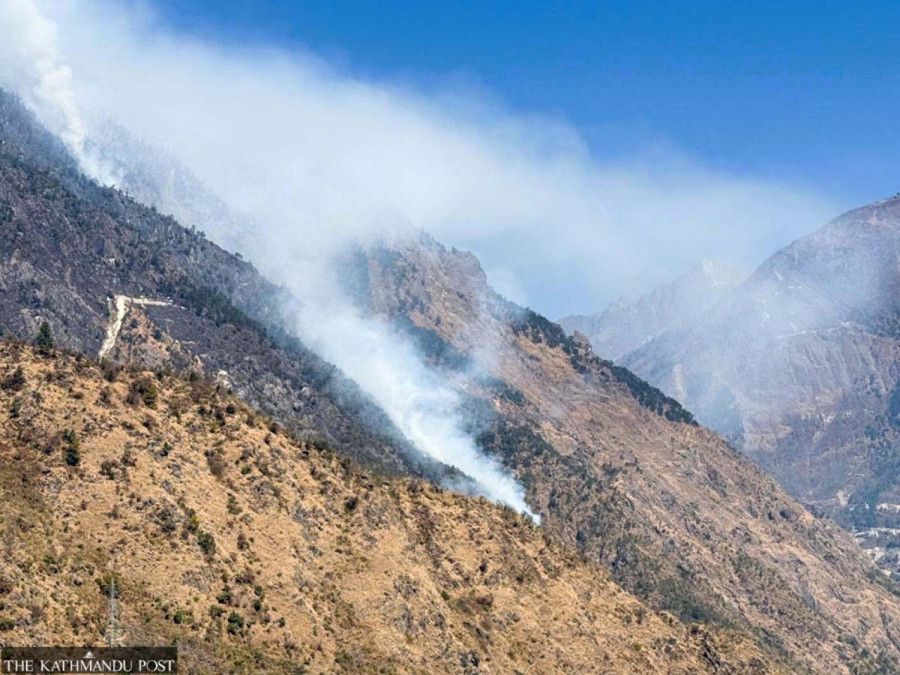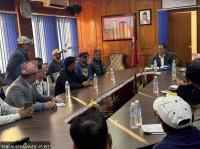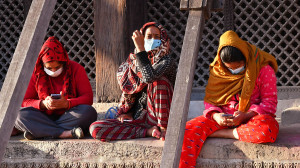Bagmati Province
Wildfires and brick firing season degrade Valley air quality
Experts warn that a prolonged dry spell may exacerbate forest fires and further worsen pollution levels. Vulnerable and sensitive people at risk.
Post Report
As the forest fire season begins and brick kilns on the outskirts of Kathmandu start firing, smoke is once again degrading air quality in the valley.
According to IQAir, a Swiss group that collects air-quality data from around the world, Kathmandu ranked the second most-polluted city in the world, with PM2.5 levels reaching 190 micrograms per cubic metre (μg/m3) at 10:30 am on Thursday. The air quality of Jawalakhel of Lalitpur further deteriorated in the afternoon, reaching 209 micrograms per cubic metre (μg/m3) at 12:30, which is a very unhealthy level.
Changunarayan in Bhaktapur measured 196 micrograms per cubic metre (μg/m3), while Sallaghari recorded 161, both categorised as unhealthy and hazardous, especially for people from sensitive and vulnerable groups.
PM2.5 refers to particulate matter (solid or liquid droplets) in the air that is less than 2.5 micrometers in diameter. It is among the most dangerous pollutants that can get past the nose and throat to penetrate the lungs and even the bloodstream. PM2.5 particles are small and are also likely to stay suspended in the air for a long time, increasing the chances of people inhaling them.
As per the Environmental Protection Agency’s air quality index, when air quality reaches 151–200, it is considered unhealthy; everyone may experience problems, with sensitive groups feeling more severe effects. When air quality reaches 201-300, it is considered a very unhealthy level, and health effects increase for everyone in the area.
The Meteorological Forecasting Division under the Department of Hydrology and Meteorology said that prolonged dry spells and low wind speeds are responsible for worsening air quality in the Valley. Kathmandu Valley has not witnessed rainfall since the start of the winter.
Officials at the division said there is no weather system that will cause rainfall for the next three days.
Experts say open fires and wildfires emit particulate matter, nitrogen oxides, carbon monoxide, sulfur dioxide, lead, mercury and other hazardous pollutants, which cause both short and long-term health consequences.
“It's just the start, as the worst is yet to come,” said Bhupendra Das, an air quality expert. “The lack of rainfall for a prolonged period will certainly raise forest fire incidents in the coming days, and agencies concerned are ill-prepared to prevent these incidents.”
Experts say the deterioration of air quality seriously affects public health. According to doctors, poor air quality causes both short- and long-term effects on public health. Bad air quality can cause pneumonia, bronchitis, conjunctivitis, skin allergy, stroke and heart problems, among others, in the short term, ulcers and cancer of the lungs and intestine, kidney disease and heart problems in the long run.
They also point to the apathy of the authorities in enforcing measures to improve air quality for worsening pollution levels. Worsening air quality has not only affected people’s health but also hit the economy and hindered overall development. Polluted air has long been taking a huge toll on public health in Nepal, but what’s alarming is that the authorities have not taken the issue seriously, according to experts.
Polluted air has been cutting short the lives of Nepali people by around five years, according to a report by the Air Quality Life Index (AQLI) that converts air pollution concentration into impact on life expectancy. AQLI is a metric produced by the Energy Policy Institute at the University of Chicago.




 10.12°C Kathmandu
10.12°C Kathmandu








%20(1).jpg&w=300&height=200)

